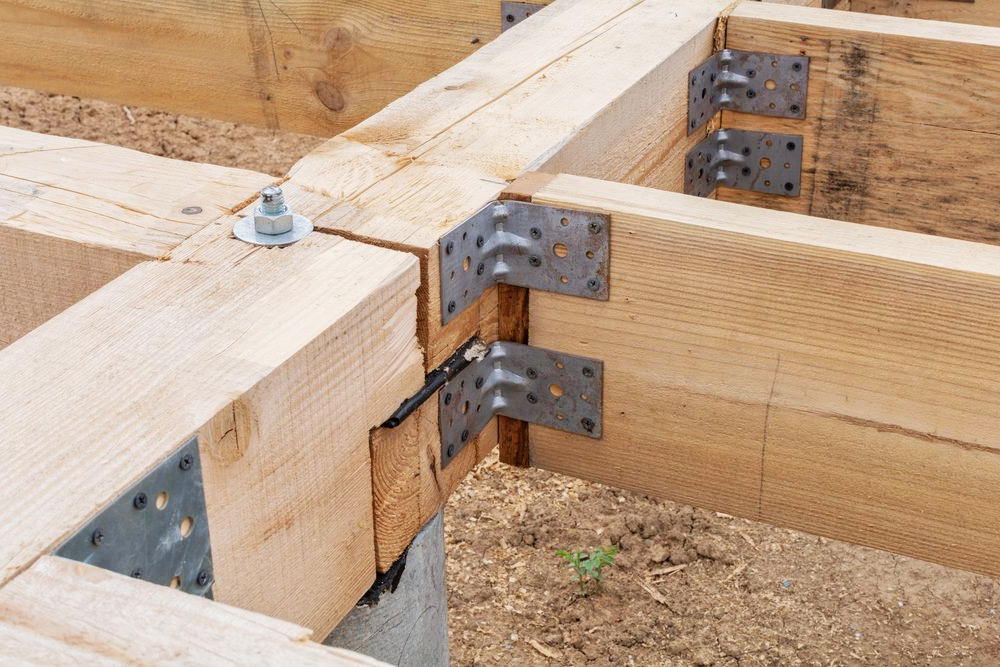Pros and Cons of Pier and Beam Foundations: Is It the Right Fit for Your Home?

When it comes to building or buying a home, the foundation is, quite literally, the bedrock of your decision-making process. One popular option in Texas is the pier and beam foundation, a system that’s been around for decades and is especially common in areas with shifting soils or frequent flooding. But what exactly is a pier and beam foundation, and why should you care? Let’s break it down—pros, cons, quirks, and all—with a little flair and fun.
What Is a Pier and Beam Foundation?
Before we dive into the pros and cons of pier and beam foundation, let’s cover the basics. This type of foundation consists of concrete or wooden piers that are set deep into the ground. These piers support wooden beams, which in turn hold up your home. Between the ground and the floor of the house is a crawl space—essentially a small, accessible area that houses plumbing, electrical wiring, and HVAC components.
Now, let’s get to the juicy part: the pros and cons.
The Pros of Pier and Beam Foundations
1. Excellent for Shifting Soils
If you live in an area with clay-rich soil (hello, Texas!), a pier and beam foundation is your best friend. These soils expand when wet and shrink during dry spells, wreaking havoc on slab foundations. Pier and beam systems allow for more flexibility and adaptability than their slab counterpart, reducing the risk of cracks and structural damage.
Fun fact: Pier and beam homes are like yogis—they’re flexible and can handle a little movement without breaking a sweat.
2. Easy Access for Repairs
Ever had to deal with a leaky plumbing line or track down an elusive electrical issue? With a pier and beam foundation, accessing those hard-to-reach spots is a breeze. Thanks to the crawl space, you can perform plumbing or electrical work without tearing up your floors or digging a tunnel to get to an underground leak. This not only simplifies maintenance but also makes pier and beam foundation repair a more convenient and budget-friendly option.
Why it’s awesome: Think of it as a secret lair beneath your home, ready to help you save time and money when things go awry.
3. Better Insulation and Ventilation
The crawl space in a pier and beam foundation allows for better air circulation beneath the house. This helps prevent moisture buildup, which can lead to mold and mildew. Plus, you’ll have an easier time insulating your home, keeping it cozy in winter and cool in summer.
Bonus points: Your home’s energy efficiency can get a nice boost, meaning lower utility bills!
4. Flood Resistance
If you’re in a flood-prone area, a pier and beam foundation can be a lifesaver. Since your home is elevated, it’s less likely to suffer water damage during heavy rains or floods.
Pro tip: It’s like giving your house a pair of galoshes—it stays dry while everything else gets soggy.
5. Comfortable Floors
Pier and beam foundations are known for their springy, comfortable floors. Unlike slab foundations, which can feel hard and cold, the wooden floors of a pier and beam home have a bit more give, making them easier on your feet and joints.
Walking on sunshine: Okay, maybe not sunshine, but definitely more comfortable than concrete.
The Cons of Pier and Beam Foundations
Now, let’s explore the other side of the coin. Because while pier and beam foundations have their perks, they’re not without their quirks.
1. Costlier to Build
One of the biggest drawbacks of a pier and beam foundation is the upfront cost. This type of foundation requires more materials and labor to construct compared to a traditional concrete slab. Those piers and beams don’t come cheap, and the added crawl space means more work for builders.
Ouch: It’s like splurging on a luxury item—you’ll pay more upfront but may save in the long run.
2. Potential for Pests
The crawl space under a pier and beam foundation can be a cozy haven for unwanted guests, like rodents, insects, and even snakes. Without proper sealing and maintenance, you might find yourself playing an unintentional game of “Who’s in My Crawl Space?”
Creepy crawlies: Let’s just say, if you’re not a fan of uninvited guests, you’ll want to stay on top of pest control.
3. Susceptible to Moisture Issues
While the crawl space helps with ventilation, it can also become a moisture trap if not properly maintained. Poor drainage or high humidity levels can lead to problems like wood rot, mold, and mildew.
Moisture matters: Think of it as the Goldilocks of humidity—too much or too little can spell trouble.
4. Requires Regular Maintenance
Pier and beam foundations are a bit high-maintenance. You’ll need to check the crawl space periodically to ensure it stays dry, pest-free, and in good shape. Any sagging beams or damaged piers will require prompt attention to avoid larger structural issues.
Homeownership level: Intermediate: Be prepared to roll up your sleeves (or hire a pro) for regular check-ups.
5. Limited Load-Bearing Capacity
Compared to slab foundations, pier and beam systems have a lower load-bearing capacity. This could be a concern if you’re planning to build a larger, heavier home or add significant structural modifications.
Hefty homes beware: If you’re dreaming of a sprawling mansion with heavy stonework, you might want to consider another foundation type.
Pier and Beam Foundation: The Verdict
So, are the pros enough to outweigh the cons? Ultimately, the choice comes down to your specific needs, budget, and location. If you’re in an area with shifting soils or frequent floods, the flexibility and elevation of a pier and beam foundation could be a game-changer. On the flip side, if you’re not up for the ongoing maintenance or higher upfront costs, you might want to explore other options.
Final takeaway: The pier and beam foundation is like that quirky friend who’s always up for an adventure. It’s flexible, fun, and reliable, but it also comes with a few quirks you’ll need to manage.
Is a Pier and Beam Foundation Right for You?
Before making your decision, weigh the pros and cons of pier and beam foundation carefully. Consider your climate, soil conditions, budget, and maintenance preferences. And if you’re still on the fence, consult with a foundation specialist who can help you make the best choice for your home.
Whether you end up with a pier and beam or another foundation type, remember: A solid foundation is the key to a happy home. Now go forth and build your dream house—quirks, pros, cons, and all!



